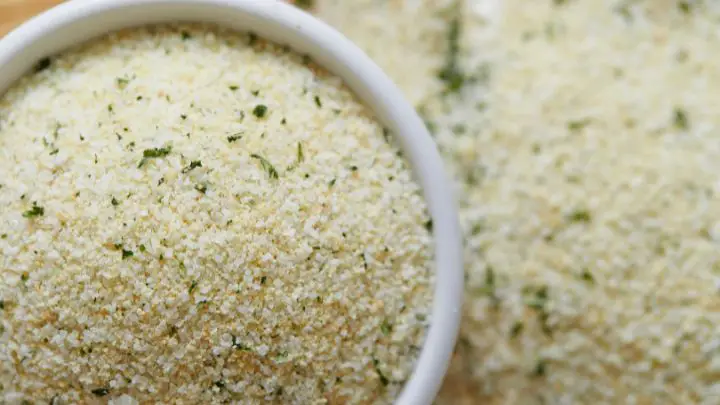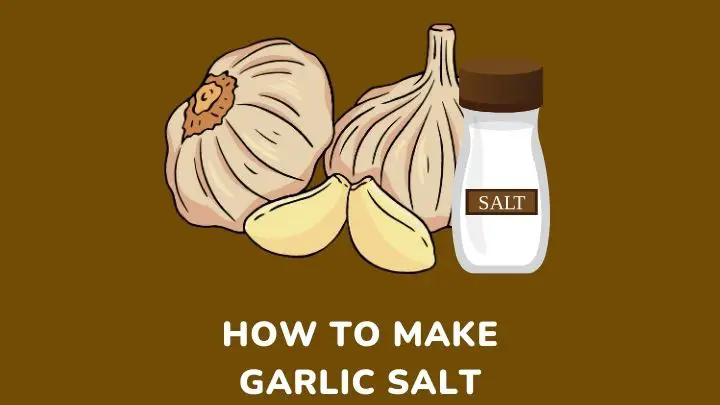From the name, without giving it much thought, you might think that mixing garlic and salt will give you garlic salt. Well, if you thought so, I bring you good news. It’s not just you. There are many others with that idea. But that’s not the way to make this seasoning.
This is one of the simplest seasonings you can learn to make at home. It is sold in stores but learning to make yours at home can help you regulate the salt content and the sodium content inherently. Moreover, it allows you to have an abundant supply for your meals.
If you are looking to learn how to make this seasoning, you are on the right page.
What is garlic salt?

Garlic salt is a seasoned ingredient made with garlic powder, salt, and an anti-caking agent that absorbs moisture and helps to keep the seasoning dry.
Other ingredients you may find in this seasoning are artificial flavorings, some additives, and maybe onion powder.
Some types of salt you can use are regular salt, sea salt, and kosher salt. You can buy garlic powder from the stores or make yours at home with fresh garlic cloves.
When making yours at home, you might not have access to an anti-caking agent or know how to use it. So, you can skip it entirely. Ensure you store the salt in a dry container that won’t retain moisture. Also, keep it in a cool, dry place to prevent it from caking.
Garlic salt adds garlicky and salty notes to your meals. Some brands use garlic granules (large, dried garlic flakes) and some use garlic powder (which is finer).
Garlic granules are much better and preferred because of their grainy texture. You will appreciate this variation more when you need it as a meat rub or to sprinkle over cooked eggs.
It is a perfect salt substitute in meals that need a garlicky flavor. However, it is not a perfectly healthy salt substitute.
Therefore, if you are at risk of having high blood pressure, already have it, or avoiding salt altogether, garlic salt is not the next alternative. It is more like your regular salt but with garlicky notes.
How to make garlic salt
Here is a guide on how to make this seasoning from scratch with fresh garlic cloves:
Making garlic powder
- Get your fresh garlic from your backyard garden or the stores
- Then, move on to peel off the papery skin. This is a little difficult to do and can be time-consuming but it is achievable
- You can try this trick: remove the cloves from the head of the garlic and use the back of your knife to crush each clove of garlic on a cutting board
- Afterward, put all the cloves of garlic in a clean and dry mason jar and close the lid
- Shake the jar such that each clove of garlic rubs against the other and the papery skin begins to peel off
- This will not get off the skin from all garlic cloves but will do up to 50% of the work you would do with your fingers
- Pour the garlic cloves on a tray and carefully pick out the skin
- Spread the garlic cloves in a single layer on the dehydrator screen and dehydrate at 125°F (52°C) for 12 hours
- If you are drying the garlic in an oven, do so in a preheated 150°F (67°C) oven. Line the baking sheet with parchment paper before spreading the garlic in a single layer. Leave the garlic to dry for 1 to 2 hours until it snaps when you break it
- Ensure the garlic cloves are completely dry before you process them into powder
- Pour the dry garlic cloves into a spice blender or coffee grinder and grind to granules. Grind to granules or powder (if you prefer a finer texture)
Mixing
- Pour the garlic powder into a clean bowl
- Mix in a ratio 3:1 parts of salt to garlic powder
- You can add dried herbs if you like
- Transfer your new seasoning into a clean jar or saltshaker and store
- To prevent it from clumping, give the jar a shake every day or throw in some uncooked rice or beans to absorb moisture and keep the seasoning dry
Is garlic salt healthy?
Garlic salt can be healthy if you consume it in moderation and use more garlic than salt. Some of the benefits you stand to gain are:
Improved circulation
Garlic is a vasodilator and blood-thinner which is necessary for improved circulation. It widens blood vessels and reduces plaque buildup in the arteries, thereby allowing more blood to flow and lowering blood pressure.
Fights toxins
Garlic contains antioxidants that help to remove free radicals and any other toxins that can damage cells and tissues. This keeps the body healthy and helps to reduce the risk of chronic diseases like cancers.
Good for good cholesterol
Consuming garlic helps to reduce the absorption of LDL (bad) cholesterol into the gut. It simultaneously enhances the absorption of HDL (good) cholesterol into the body. This helps to reduce the risk of developing heart disease.
Uses of garlic salt
- To season soups, stews, vegetables, sauces, vegetables, casseroles, taco fillings, etc
- Add to dry rubs for meats
- Sprinkle over cooked eggs, grilled or roasted chicken, fish, or steak
- Add to salad dressing
- To flavor popcorn and crackers
- For seasoning pasta or rice dishes
- For seasoning guacamole or avocado toast
What can you use when you run out of garlic salt?
If you run out of this seasoning and fresh garlic cloves but you are in a pinch, you can use any of the following alternatives:
- 1 teaspoon of garlic powder and 1 tablespoon of salt will yield 4 teaspoons of garlic salt
- 2 teaspoons of garlic juice and 1 tablespoon of kosher salt is equal to 3 teaspoons of garlic salt
- Onion salt in a 1:1 substitution
- Garlic oil
- Other seasonings like celery salt, cumin, and mustard powder with salt
FAQs
Can you use garlic powder instead of garlic salt?
Garlic powder is most likely the number one substitute for garlic salt in most recipes. When using garlic powder, use one teaspoon of garlic powder and one tablespoon of kosher salt.
If you need just a little amount of garlic salt, mix ¾ teaspoon of kosher salt and ¼ teaspoon of garlic powder.
Can you make garlic salt with fresh garlic?
Yes, you can make garlic salt with fresh garlic. However, you must chop, bake, or dehydrate, and grind the dried garlic into fine powder or granules before mixing it with salt.
Should you add more salt when using garlic salt?
Garlic salt contains salt. You may or may not need to add more salt to your meal, depending on the amount of salt your dish requires. If you will be adding more salt, be careful not to add too much so you do not end up with a salty dish.
Conclusion
This two-ingredient seasoning is a star in many kitchens. It is a healthy substitute for regular salt, especially in meals that require garlicky notes. While it may seem to contain less sodium than regular salt, remember that ¼ teaspoon contains 400 to 470 mg of sodium.
Therefore, you should watch how much of it you add to your meals before and after cooking. Also, watch how much extra salt you add to the meal if necessary. Making a tasty dish is great, but your health matters most.
If you do not trust the brands in the store, you can put the simple recipe in the article to work or use any of the substitutes listed.
Finally, if you get a hot sensation in your stomach every time you eat garlic in your meals, here’s what you can do to feel better.
Thanks for reading.

